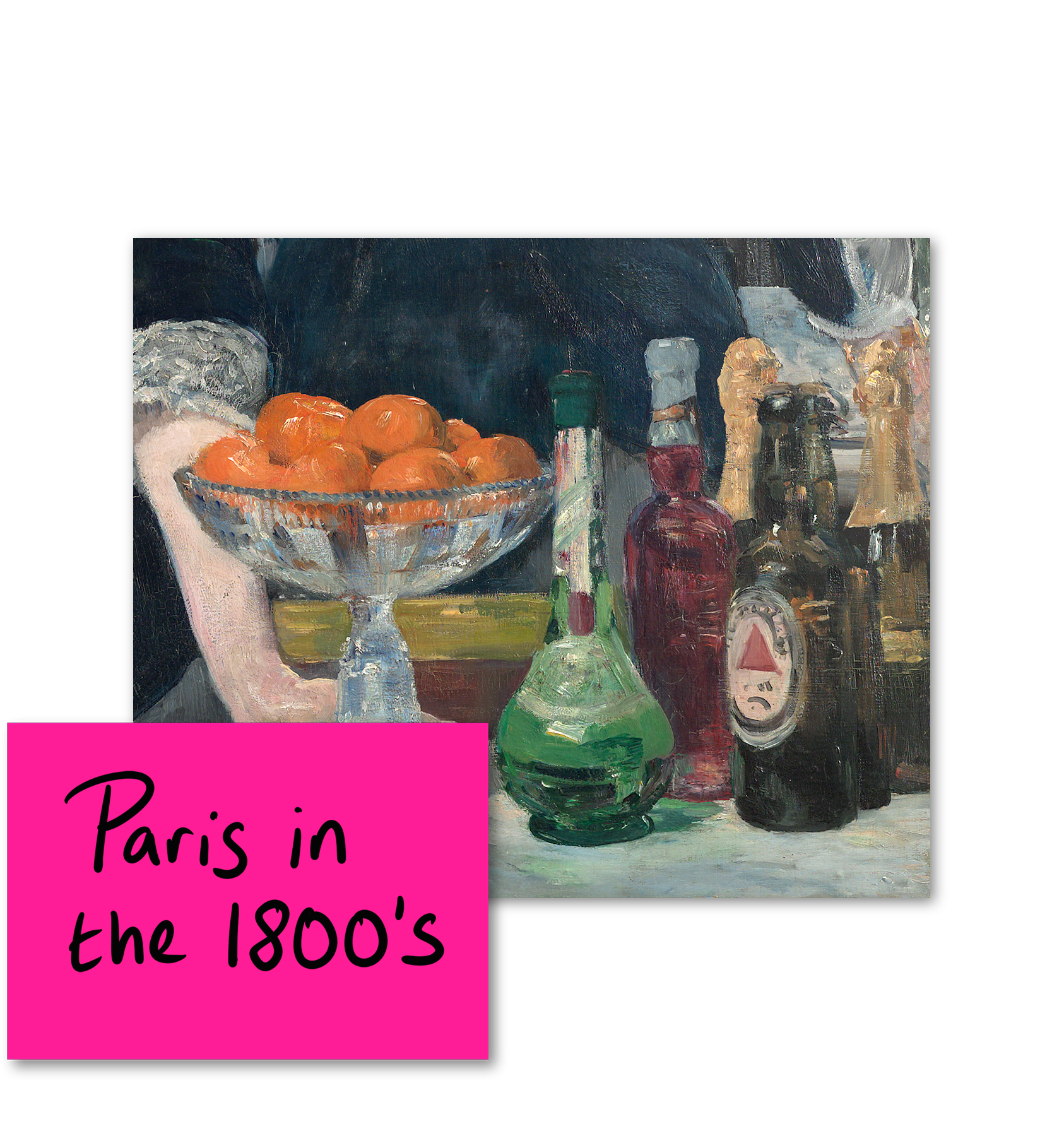
Paris in the 1800’s
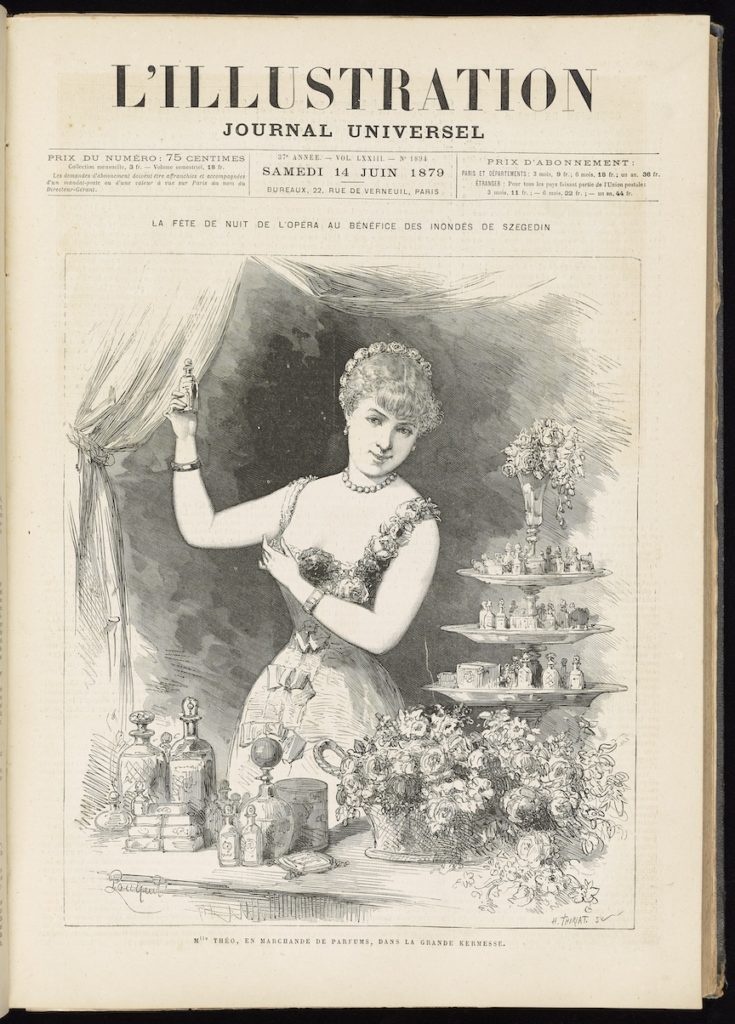
In the second half of the 1800’s, Paris led the world in consumer culture. The first ever department stores were developed in the city, and businesses expanded visual culture with increasingly refined approaches to advertising, like the example above. The image of a fashionable young woman standing behind a counter with luxury items on display would have been familiar to the public through commercial illustrations like this one.
This theme was of particular interest to project participant Hannah. She observes that in Manet’s A Bar at the Folies-Bergère (1882) the reflection from mirrors, bright lights and varying sized brushstrokes creates a dizzying environment. The red triangle on the Bass beer bottles was the first protected trademark in the UK which links to the modern commercialised and global world. Electric lights were also a recent innovation. She stands in the centre behind the bar along with the other products. It’s like she’s a consumable product.
Image credit: J. J. Dubochet. Cover, Saturday June 14, 1879, L’illustration. Getty Research Institute, Los Angeles (84-S259)
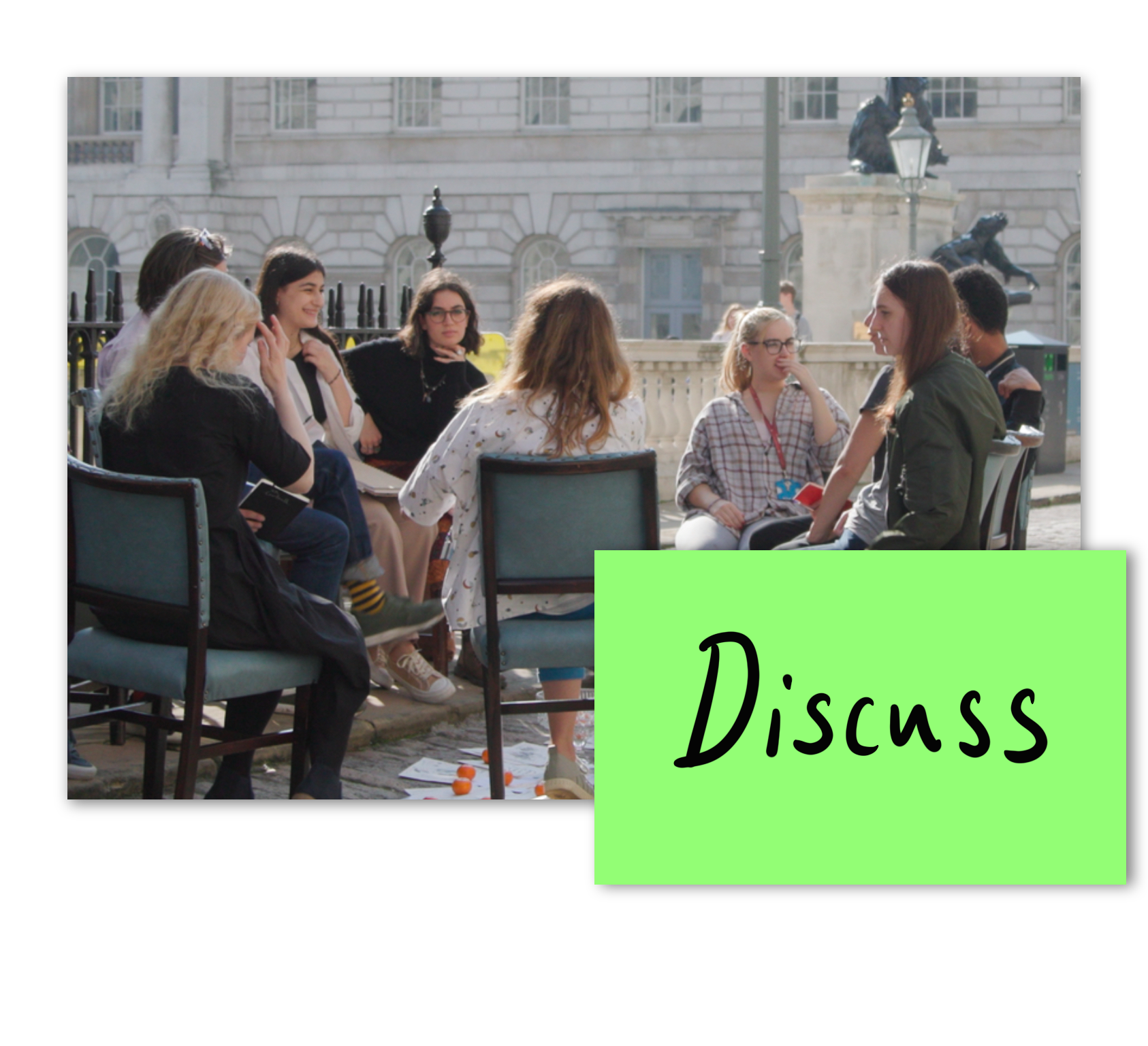
Discuss
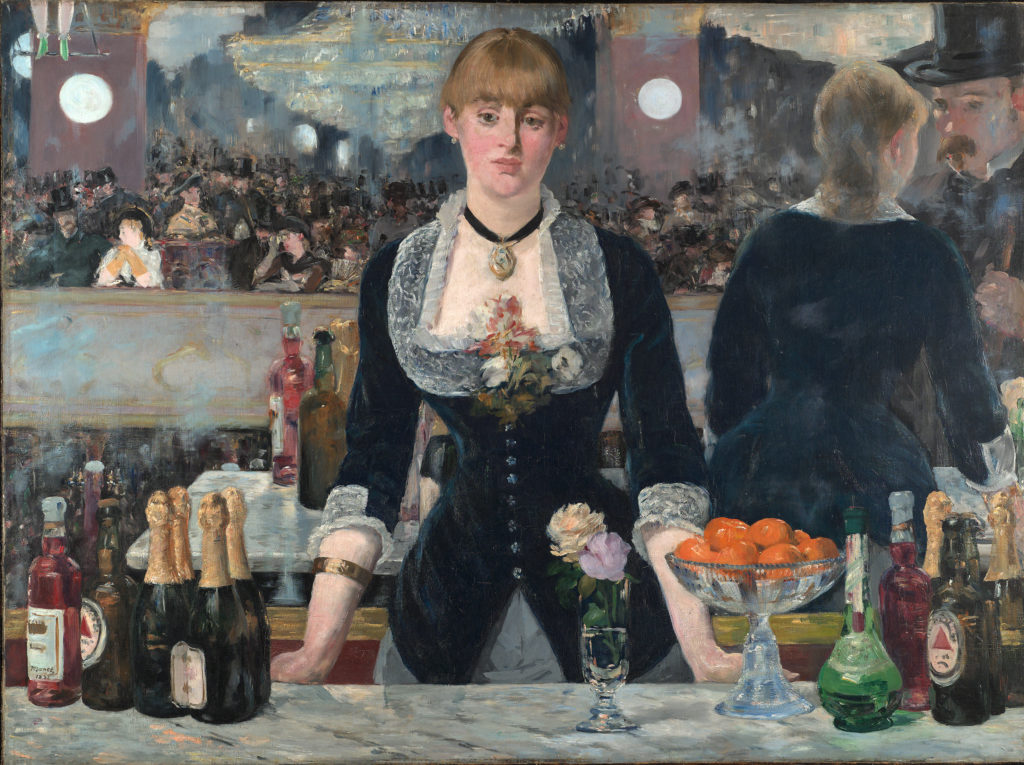
Does the painting’s subject feel relatable to commercial experiences today? If not a bar, then perhaps a cinema or shop?
What might Manet have been trying to say about the experience of nightlife? Do events/venues always live up to what they promise?
The Bass beer logo is very distinctive. Where else can you see triangles in the painting’s composition? Do you think this is deliberate or coincidental?
Do you think there is any significance to Manet adding his signature on a wine bottle – one of the products for sale?

Reflections
“Her gaze is like she’s looking out and looking down. It could suggest boredom, but I’ve also noticed that in many of Manet’s paintings he also uses a similar kind of gaze, like it’s a main theme.” Barbara
“In my experience of working in bars, the fancier the bar the worse I was treated by customers.” Toya
“There’s been a lot of speculation over whether Manet is implying the barmaid is herself for sale. The Folies-Bergère was a venue known for prostitutes, but we have to be cautious not to take on biased attitudes from the time towards working women.” Fran
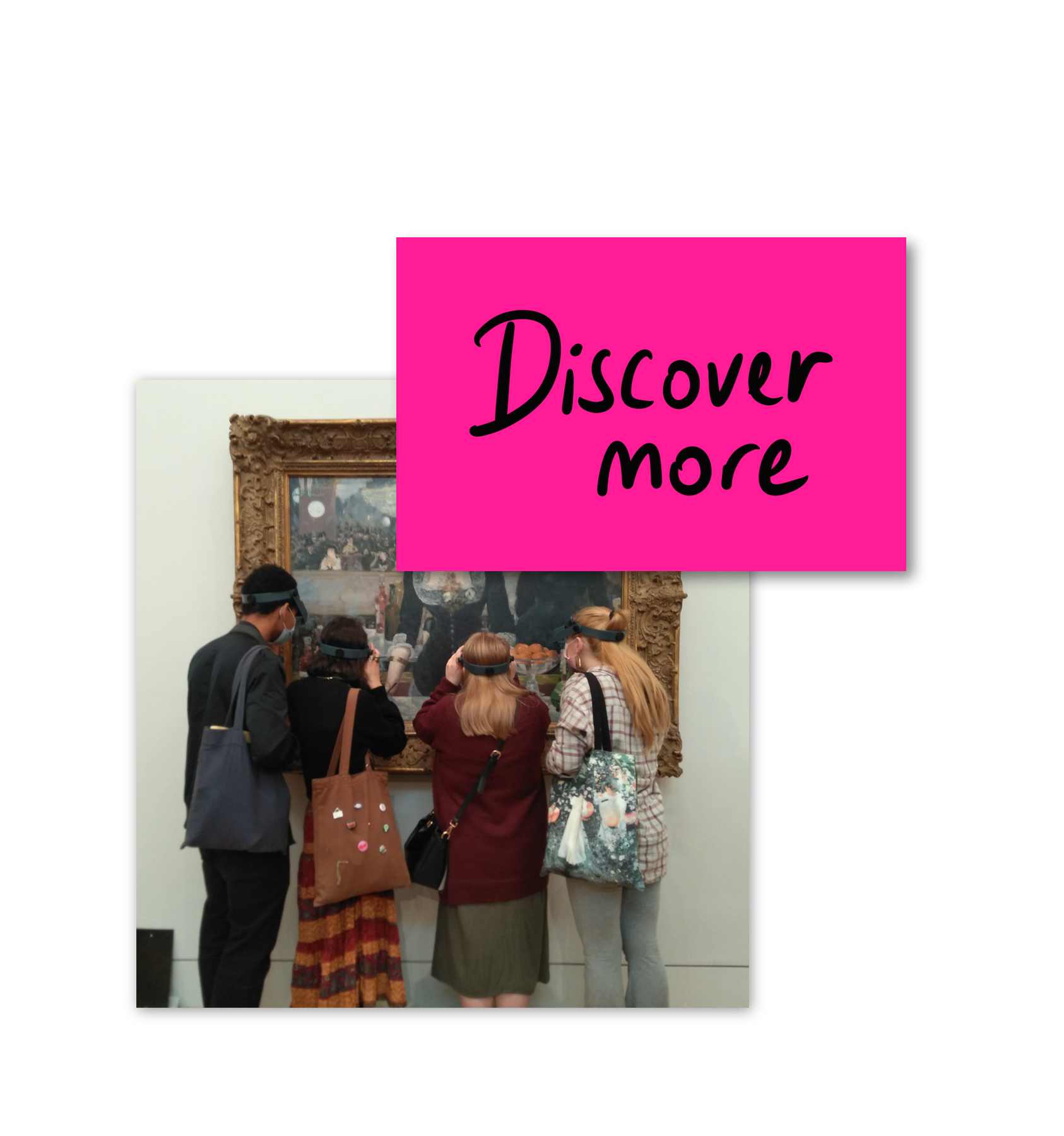
Discover more
Discover photographs of 19th-century shops and exhibition spaces in Paris in The Courtauld’s Conway Library.
Navigate by clicking the images above, or find a text version below.
Or go back to Themes to explore.
In the second half of the 1800’s, Paris led the world in consumer culture. The first ever department stores were developed in the city, and businesses expanded visual culture with increasingly refined approaches to advertising, like the example above. The image of a fashionable young woman standing behind a counter with luxury items on display would have been familiar to the public through commercial illustrations like this one.
This theme was of particular interest to project participant Hannah. She observes that in Manet’s A Bar at the Folies-Bergère (1882) the reflection from mirrors, bright lights and varying sized brushstrokes creates a dizzying environment. The red triangle on the Bass beer bottles was the first protected trademark in the UK which links to the modern commercialised and global world. Electric lights were also a recent innovation. She stands in the centre behind the bar along with the other products. It’s like she’s a consumable product.
Discuss:
- Does the Painting’s subject feel relatable to commercial experiences today? If not a bar, then perhaps a cinema or shop?
- What might Manet have been trying to say about the experience of nightlife? Do events/venues always live up to what they promise?
- The Bass beer logo is very distinctive. Where else can you see triangles in the painting’s composition? Do you think this is deliberate or coincidental?
- Do you think there is any significance to Manet adding his signature on a wine bottle – one of the products for sale?
- Can you think of any contemporary artists who engage with commercial and popular culture?
Reflections:
“Her gaze is like she’s looking out and looking down. It could suggest boredom, but I’ve also noticed that in many of Manet’s paintings he also uses a similar kind of gaze, like it’s a main theme.” Barbara
“In my experience of working in bars, the fancier the bar the worse I was treated by customers.” Toya
“There’s been a lot of speculation over whether Manet is implying the barmaid is herself for sale. The Folies-Bergère was a venue known for prostitutes, but we have to be cautious not to take on biased attitudes from the time towards working women.” Fran
Discover more:
Photographs of 19th-century shops and exhibition spaces in Paris in The Courtauld’s Conway Library.

